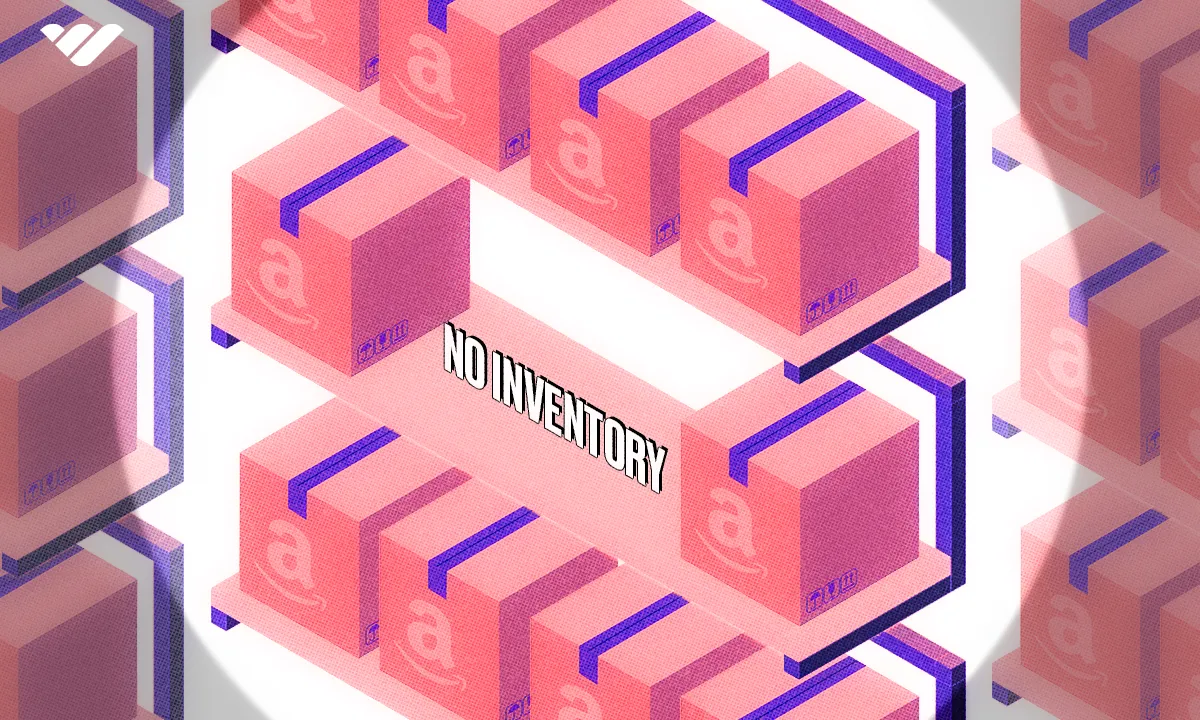Selling on Amazon is a great way to make money, but dealing with inventory can be costly and time-consuming. However, there are many ways that you can sell on Amazon without holding any inventory. Read this guide to learn what they are and how to get started.
Key takeaways
- Holding inventory requires significant upfront capital, storage space, and fulfillment responsibilities.
- Dropshipping allows sellers to operate with 10-30% profit margins without purchasing inventory upfront.
- Print-on-demand products eliminate inventory costs through Amazon's Merch on Demand program.
- Digital products offer the highest profit margins since production costs are essentially zero.
- Fulfillment by Amazon handles storage and shipping while sellers maintain inventory ownership.
Each year, it takes a more refined strategy to succeed as an ecommerce entrepreneur, especially when it comes to selling on Amazon.
As an Amazon seller, the most common approach is to buy and hold inventory, but this can hold you back for many reasons in addition to simply costing more upfront compared to other ecommerce models such as selling digital products in which there is no need for any physical inventory at all to be held or fulfilled.
Thankfully, if you still want to utilize Amazon’s broad reach and become a seller in their dominant ecosystem, there are several methods that you can use to sell there without holding inventory which we’ll dive into in this comprehensive guide.
Why holding inventory can hold you back
Dealing with physical product in the traditional sense of holding and fulfilling inventory on your own can work well for experienced sellers or those with a large budget, but if you're just starting out, holding inventory can hold your business back.
This is because holding inventory requires a good deal of upfront capital, in addition to the need for storage space and fulfillment. As a result, it’s not the best idea for beginners or those who don’t have much budget to start with.
Here is a comparison of the traditional selling and holding of inventory against selling without holding any inventory:
| Factor | Traditional selling & holding inventory | Selling without holding inventory |
|---|---|---|
| Initial investment | Higher up-front investment required, continued costs for storage and logistics | Little to no investment up front, and no cost for storage and reduced logistics costs |
| Inventory mangement | Need to manage all aspects of inventory management, including packing, fulfillment, restocking and returns | Hands-off inventory management, responsibility only for high-level decision making |
| Fulfillment responsiblity | Full responsibility on the seller | Partially or fully delegated fulfillment |
| Storage | Need for physical space from the seller | No need for storage |
| Scalability | Scaling requires increasing responsibility and cost in the areas of inventory management, storage and overall logistics | Can be scaled more easily without increasing responsibilities in areas that affect holders of physical inventory, especially with digital products |
5 ways you can sell on Amazon without inventory
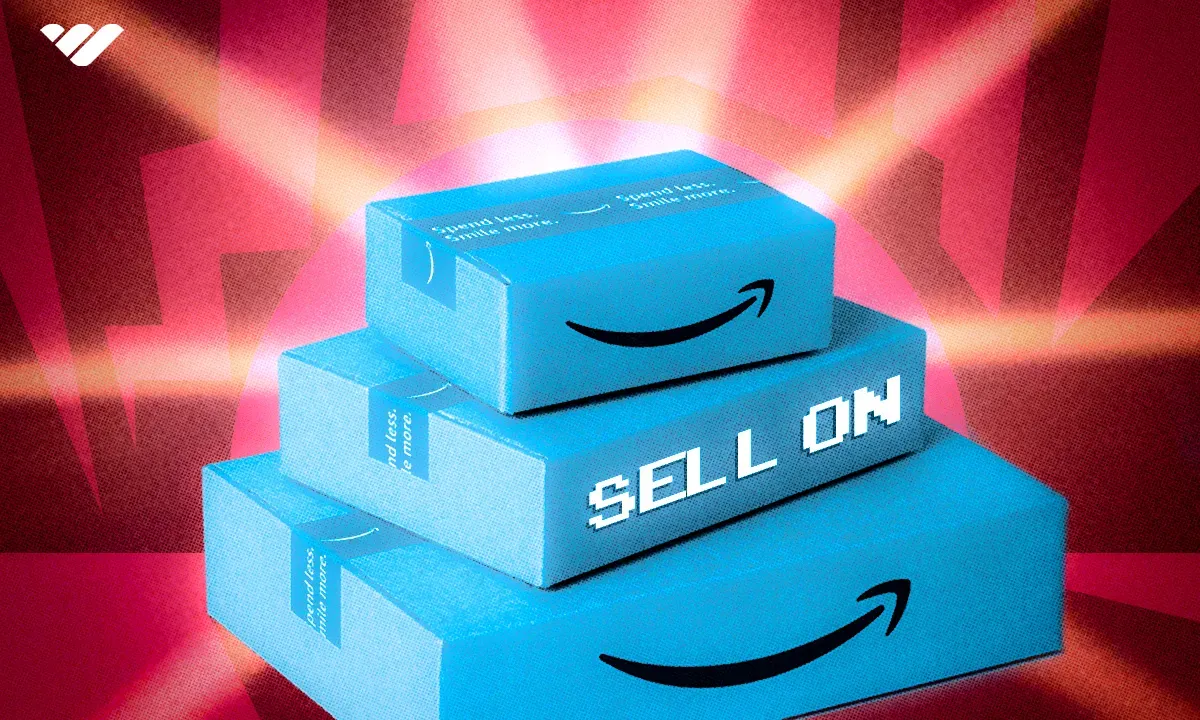
It's clear to see that selling on Amazon without holding inventory requires less capital, less management, less fulfillment, and increased scaling potential over holding inventory yourself.
But how do you do it? Let’s dive in now with some ecommerce business models that you can use to sell things on Amazon without holding any inventory:
1. Dropshipping

One of the most appealing business models that has in some sense become a largely misunderstood buzzword in the realm of entrepreneurial ecommerce is dropshipping.
The main reason that dropshipping is so appealing to sellers is because it’s a totally hands-off way to handle inventory: as a dropshipper, you never even have to see or touch your product, you simply need to display it on your website for your supplier to fulfill in the background.
Dropshipping is allowed and in some ways even encouraged on Amazon as they have a dedicated page to this topic on their website, but before diving in, you should know the pros and cons:
Pros:
- Low startup costs due to no need for purchasing inventory to sell
- Possible to automate many aspects of fulfillment and ordering
- Diverse product selection means you can test and sell different products at once
- Can scale quickly with viral videos or ads without any additional fulfillment burden
Cons:
- Lower profit margins
- Longer shipping times
- For most products, a reliance on trends that might be short-lived
- Possibility for intense competition
- Scaling with ads, although possibly highly effective, can also be costly
Dropshipping costs and income:
The upfront cost of dropshipping is fairly minimal. The first cost to consider as a dropshipper is your online storefront, which can sometimes be totally free depending on which SaaS ecommerce platform you choose. However, premium themes that will result in higher conversion rate and customer retention can cost between $100-$300.
One of the other major costs to keep in mind is advertisements, which can be as low or as high as you want them to be. Some dropshippers use organic social media to push their products, but this might include the cost of an assistant or software to help run your social media.
When calculating potential income with dropshipping or any of these business models that are free of holding inventory, you should think in terms of profit margin and potential reach.
In dropshipping, common profit margins are between 10%-30%, and since you don’t have to actually buy the inventory upfront, you should think more about the dollar amount rather than the percentage with dropshipping: for example, if you’re dropshipping an item for $80 at a 10% profit margin, you’re making much more per sale than a $10 product with a 40% profit margin.
The income potential of a dropshipper will depend on reach and volume, and can range from a few hundred dollars to a few thousand dollars or more monthly.
Popular dropshipping products:
Popular products for dropshipping include kitchen and home gadgets, beauty-related products, pet supplies, and unique electronics.
2. Print on demand
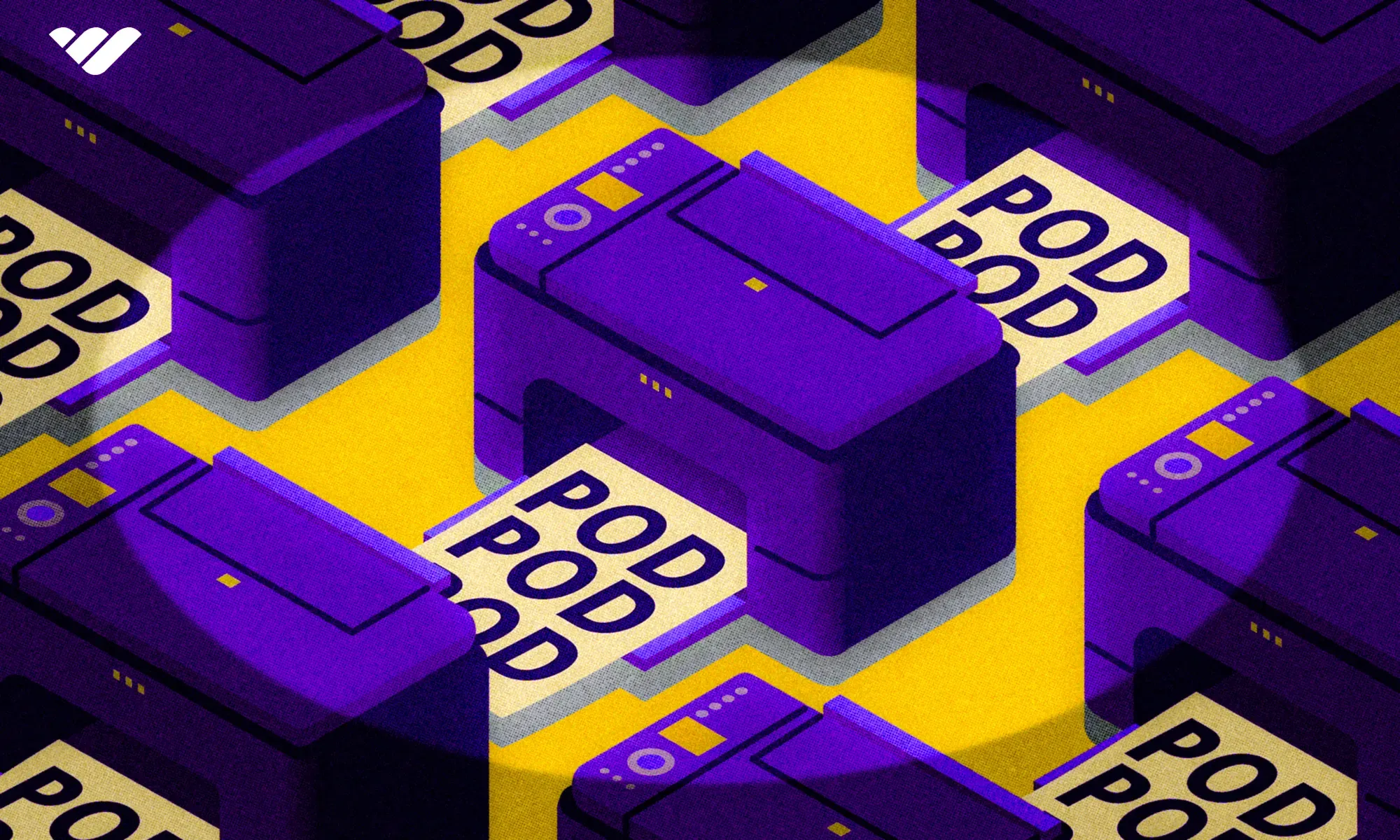
Another category of products that can be sold without holding any physical inventory that has been picking up in popularity due to its potential is print-on-demand, which is called Merch on Demand on Amazon.
With this business model, sellers upload designs that can be printed on various physical products such as T-shirts and posters. Selling shirts on Amazon without inventory has become especially popular and lucrative in recent years. Successful Amazon Merch on Demand sellers are able to analyze current Amazon statistics including keyword volume and competition in order to carve themselves out a profitable offering within a niche market.
Pros:
- No need to purchase or store inventory
- Easily create unique products that cater towards passionate niche audiences
- Easy to test multiple designs without much risk
- Fun and rewarding for creative and design-inclined sellers
Cons:
- Merch on Demand fees add up and can be complicated to fully understand
- Application needed to become a Merch on Demand seller
- Competition can see and copy your designs
- Fulfillment time can be longer
Print on demand costs and income
If you’re using Merch on Demand, there is no cost for creating your product as Amazon will take care of this in addition to all aspects of fulfillment with its fee structure that only deducts from your sales price.
Most other print-on-demand services often require you to buy the product before it can be fulfilled, but this can be done after the customer makes their purchase from your storefront at a profitable pricepoint.
Since print-on-demand products are less likely to have organic demand and reach, you will either have to build up a social media theme page over time or pay for ads to reach your intended target audience faster.
Not all print-on-demand store owners create all of their designs, and some pay to outsource design to third parties which have varying costs based on quality and reputation and can be hired from a freelance platform such as Fiverr.
Making a good income with print-on-demand or Merch on Demand will depend on how popular your designs get and the number of products sold, but top-ranking sellers on Amazon make at least a few thousand dollars a month.
Popular print-on-demand products
In general, the most popular print-on-demand products are wearable, such as T-Shirts and hoodies.
Other popular products include coffee mugs, posters, hats, towels and accessories such as phone cases and tote bags.
3. Digital products
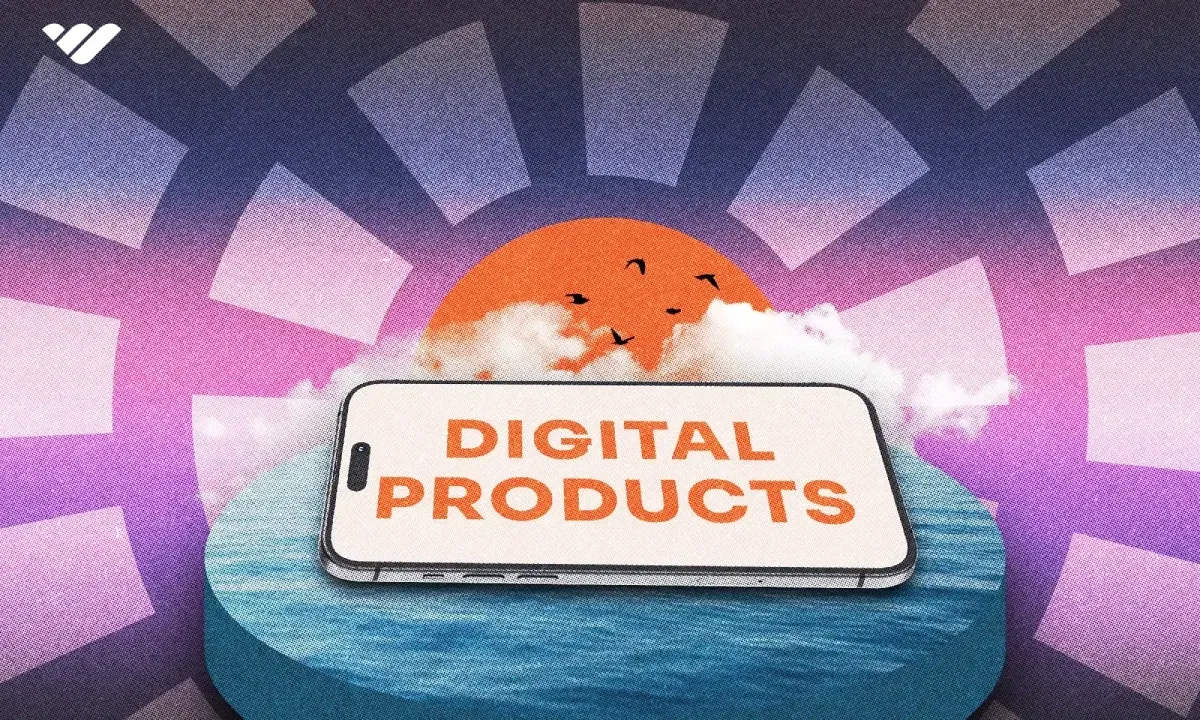
Many new entrepreneurs start off in the digital product realm because they don’t want to deal with the hassle of physical inventory at all, regardless of whether or not it’s their responsibility to see, handle, or fulfill the product.
Digital products, which include ebooks, video courses, and software, can have an incredible profit margin since the cost to produce them is essentially nothing, and it makes virtually no difference in fulfillment efforts if you are to sell one or one hundred in a day.
Although it will take some thinking and planning to find out exactly what it is, there is a digital product for everyone to sell–one simply needs to productize a skill that someone would pay them for into a digitally consumable product, and most people are good at something and have knowledge that others will happily pay them for to learn about.
Pros:
- Highest profit margin for any product as they can be produced at 0 cost
- Easily scalable with the potential to reach huge levels
- Global reach and easy and free fulfillment to any location
- Cheap to produce and test products
Cons:
- Can be easily copied and shared/pirated
- Need a convincing hook and good value proposition to get someone to buy at any price point, which can be hard to craft
- Can be difficult to find an intended target audience
- Adspend can become unprofitable
Digital product costs and income
One of the most appealing things about selling digital products is the low cost to produce and sell them.
You can get started selling digital products by simply choosing an online platform to host them on, many of which are completely free to sign up and use.
If you do end up choosing a premium version of a subscription or a paid theme, you’ll have to account for those costs for launching your digital product, and this cost can range from around $20 to over $200, with some costs being one time and others being monthly. For more on where you can sell digital products and specific costs, check out our guide here.
In terms of income, the amount you will make selling digital products will depend largely on how many people you can reach, and how much of those people are a targeted audience that is likely to convert.
To paint a more specific picture of what this might look like with exact numbers, imagine you are a social media influencer with 10,000 targeted followers. If you have a $20 digital product, and you advertise it to your audience and 10% of them buy it, you’ll make $20,000 (1000 followers x $20). Whether this happens in a year, a month, or a day depends on how effectively you can reach them and get them to buy from you.
While the specific strategies of how to make money with digital products gets much more nuanced than that, if you manage to build a platform to gather and reach a growing audience, you can expect to make a few hundred to a few thousand dollars or more with a digital product.
Popular digital products
Some of the most common digital products include eBooks and video courses. These are popular for customers because of their easy consumability and straightforward value proposition. If you are technically inclined, you can sell software such as SaaS, plugins, monitors or scripts. When made well, these types of digital products will be difficult to copy and have the potential for a loyal, subscription-based audience.
However, if you choose to sell digital products on Amazon, your product choice will be restricted to those that are approved on the platform, which includes Kindle books and digital art, but doesn’t allow for eBooks of any price point, video courses, or SaaS, which are some of the most profitable digital products.
4. Fulfillment by Amazon
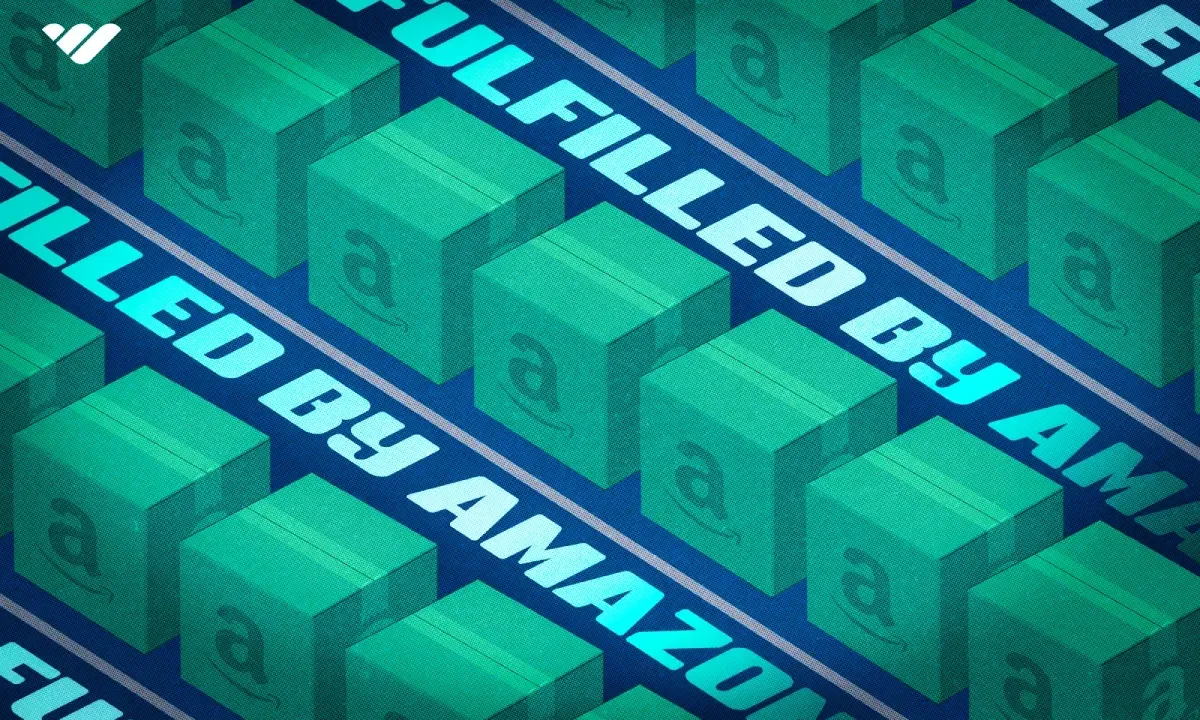
One of the major testaments to Amazon’s absolute dominance and control not only over ecommerce but over logistics and shipping is their Fulfillment by Amazon (FBA) program.
With this model sellers can ship their inventory in bulk for Amazon to split up, store, and ship each item individually. Additionally, their inventory will be eligible for fulfillment via Prime, which has a much higher conversion rate compared to non-Prime products.
However, FBA has fees that cut into profit margins more than most fulfillment methods, and it’s only available to Professional seller accounts who must pay an ongoing subscription in order to maintain eligibility as an FBA seller.
Pros:
- Full delegation of all aspects of individual product fulfillment, including picking, packing, shipping return management, and even some aspects of customer service.
- Products listed as top-converting Prime listings
- Possible to reach high levels of volume quickly with a winning product
- Logistically simple to scale
Cons:
- Requires a paid Professional Seller account and fees that are higher than self-fulfillment
- Must constantly maintain listings to make sure they are performing well against inevitable competition
- Potential for short-lived profit windows as saturation arises.
- Accumulation of storage fees for unsold inventory, and additional fees to take dead inventory back
- Need for ungating for approval to sell many products
Amazon FBA costs and income
The first cost to selling with Amazon FBA is having a Professional Seller account, which is $39.99 per month.
On top of the ongoing monthly subscription, you’ll have to be aware of the long list of associated fees for using FBA, which include a referral fee, fulfillment fee, storage, shipping and shipping fees.
As a rough estimate, you should expect total FBA fees to range between 20-30% of your item’s sale price.
You will also have to factor in the cost of initial inventory, which can be as low as $500 or less for retail arbitrage, but private label sellers often invest a few thousand dollars to launch and continue to test their business in order to reach consistent profitability.
In terms of income, the median FBA seller produces a revenue of between $1000-$25,000 according to analytics software Jungle Scout, and assuming a profit margin of 20%, this means an income of $200 to $5000 monthly, but this will vary greatly based on the exact specifics regarding the seller and their product.
Popular Amazon FBA products
Since Amazon is such a broad marketplace, popular FBA products can be found in almost any category.
5. Amazon Kindle Direct Publishing (KDP)

Amazon started as a book selling platform, and today it continues the legacy with its Kindle Direct Publishing (KDP) program, which allows independent authors to launch and test books as a self-publisher.
Thanks to the large audience of readers on Amazon looking for new books, there are many success stories about independent authors who have built and maintained audiences using KDP, so it remains one of the most attractive ways to self-publish and launch a book to an audience today.
As a KDP publisher, you simply need to publish your book, and you can sit back and collect mostly passive income if your book gains traction. However, to reach this level, you’ll need to concentrate marketing efforts and craft an appealing offering, and you won’t know whether or not your book will be a hit until you actually take the time to write and launch it.
Pros:
- Reach Amazon’s large user base of readers
- Passive income business model with collection of royalties
- Free to publish any number of books
- Retain full creative control over content and pricing within Amazon’s pricing requirements
Cons:
- Royalties are quite high compared to industry standards (35-70%)
- Less freedom to liberally price compared to selling ebooks on other platforms
- Writing an ebook can be quite time-intensive and might yield little return
- Popular categories are quite crowded, so it might take ad spend and a marketing budget to find new readers
Amazon KDP costs and income
While there are no up-front costs to self-publish and launch your ebook on Amazon’s KDP marketplace, you have to keep in mind the royalties based on which type of book the customer buys and what royalty structure you choose.
As a KDP seller, your book can be purchased for Kindle consumption as an ebook, or a physical book, the latter of which has an associated printing fee. In terms of royalty percentages, a 40 and 60% royalty rate applies to print books, and eBooks have a royalty rate of either 35% or 70% depending on price and whether or not they’re enrolled in KDP select. You can see more info on exact KDP fees here on Amazon’s official page.
Another cost to keep in mind is marketing. With so many other sellers in popular categories, it’s unlikely that new readers will find you organically. Consider running social media ads towards a targeted audience, or for organic reach, you can use TikTok–there’s been a trend of new Kindle books gaining popularity on “Booktok”.
The income of KDP sellers can vary drastically, with some sellers earning under $100 per month, and top sellers earning well over $10,000 per month. The largest factor that will contribute to your income is your seller ranking in your category, and how popular your category is.
Popular Amazon KDP books
The top-selling Amazon KDP books are fiction, with the most popular categories being romance, horror, mystery and fantasy.
In terms of non-fiction, the top categories are related to cooking, business, travel, and self-help.
Getting started as a seller on Amazon
While the specifics will vary based on the overall business model and product you choose to sell, the general outline for using Amazon as a platform to sell without inventory remains the same:
1. Set up an Amazon account
- Go to sellercentral.amazon.com and click “Sign Up”
- Choose between an Individual or Professional Selling Plan
- Provide all required information. If you haven’t sorted out your business details and tax information yet, do this first before signing up
- Be sure to use 2-step verification for account security
2. Decide what you’re going to sell
- Find a profitable product by researching best sellers on Amazon, performing keyword research, or using tools like Jungle Scout and Helium 10
- Analyze overall demand, competition, and profitability
- Make a list of products that have high demand, good profit margins, and manageable competition
- Compare and settle on your inventory-management-free business model (dropshipping, print on demand, KDP, etc)
3. Perfect your product listing
- Make sure to use high-quality images or accurate stock images when creating your listings
- Write a detailed, keyword-rich product description
- Compare pricing of competition and price so that you have the best chance at getting the Buy Box
4. Sell and Scale!
- Track and manage the ranking of your listing
- Have and maintain top-notch customer service, which will include addressing any questions or concerns and handling orders so that you gather good reviews which will help boost your ranking and reputation
- Set and achieve goals based on competition and overall demand in the space
- Effectively manage your hands-off inventory by checking stock and replenishing if necessary
- Analyze metrics such as your conversion rate, profit margins, and how fast your inventory is moving
- Funnel profits into scaling further growth with software, ads, automation, and a team
- Gather your users onto a platform such as social media, an email list, Discord or Telegram group so that you have a free marketing channel with a loyal audience to launch new products to in the future
Looking for ecommerce advice? Learn from the experts
Selling on Amazon without inventory is a more advanced form of buying and selling products on Amazon for profit. With several different choices for carrying out this strategy, including dropshipping, FBA, digital products, KDP, and print-on-demand, you’ll have to carry out a certain strategy over time that will give you the best chance for success.
While this article is a good starting point, it’s important to understand that becoming a profitable Amazon seller is a dynamic task that fluctuates based on market condition, trends, and overall demand. Keeping up on ecommerce news on your own can prove overwhelming, and most high-level sellers will tell you that they didn’t get to the level they’re at now without assistance from mentors or a group that they could receive advice from and remain accountable to.
Whop is home to some of the most helpful and reputable private groups that help ecommerce business owners in any realm and stage of operation find the success that they’ve been waiting for. Whether your goal is to succeed as an Amazon seller, a dropshipper, or the owner of an original ecommerce brand, Whop has a group that’s right for you.
Start by checking out our top-ranked ecommerce groups, and if you want to check them all out for yourself, head over to see all of the groups and take the first big step in your journey as an ecommerce entrepreneur today!
Amazon selling FAQs
What are the best types of products to sell without inventory on Amazon?
The best types of products to sell without inventory will vary based on the business model and fulfillment method you choose, but generally speaking, you’ll want to sell a product that has good demand, manageable competition, a healthy profit margin, and a high customer satisfaction rate. Specific examples within different business models would include a profitable brand-name item on Amazon FBA, a trending product like an oil diffuser as a dropshipper, and a well-designed T-shirt for print-on-demand.
How do I price digital products on Amazon?
When it comes to pricing digital products on Amazon, you have to follow the platform’s pricing restrictions and you need to price similarly based on competition in order to be a viable option. For example, when it comes to publishing a book with Amazon Kindle, you will be competing against books that are selling for an average price of between $1.99 to $7.99, so pricing any higher might result in a lower ranking and slower sales. Choosing a platform that allows you to list more types of digital products at any price is a better option if you want greater margins.
Is it better to sell on Amazon without holding inventory?
Selling on Amazon without holding inventory has numerous benefits over selling on the platform while holding inventory, most notably the delegation of the peskiest part of handling physical inventory which includes picking, packing, storing and shipping. However, there are downsides to consider as well if you want to sell things on Amazon using this method, which includes lower profit margins and increased exposure to competition.
Can I sell on Amazon without inventory for free?
Signing up to sell on Amazon with a basic seller account is completely free, and from there you will be able to publish Kindle books, list dropshipping inventory, and sell print-on-demand merchandise at no additional cost. However, if you want to sell with Amazon FBA, you’ll have to have a Professional seller account which costs $39.99, and you will likely be reselling product so you will also have to invest in inventory to sell.
How else can I make money on Amazon without holding inventory?
An alternative to selling inventory on Amazon would be to test products on Amazon and get paid in free product or rebates, which you can find most easily if you have a decent-sized audience on social media. As a non-influencer, you can still find and apply for different programs that will allow you to make money or get freebies from sellers that need feedback on their products.


